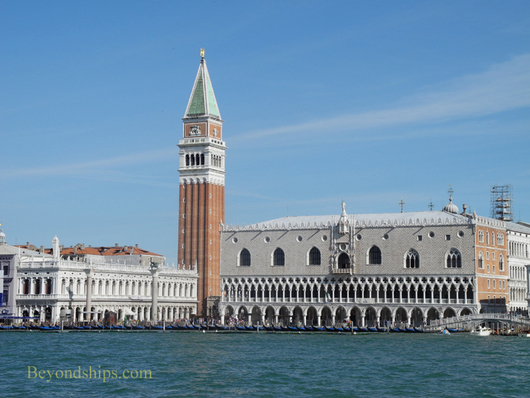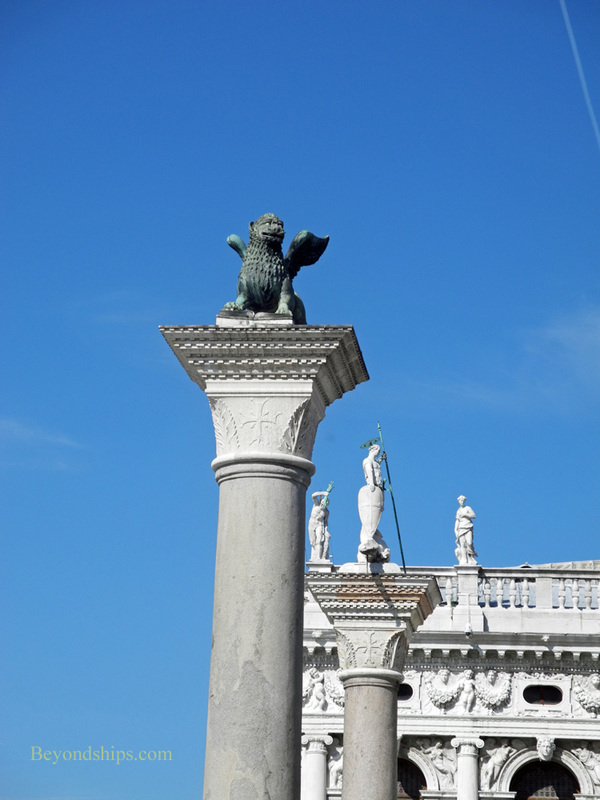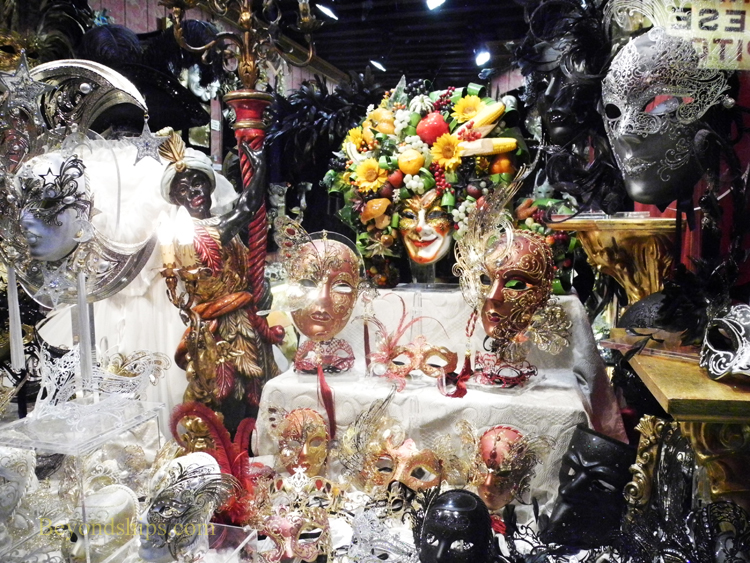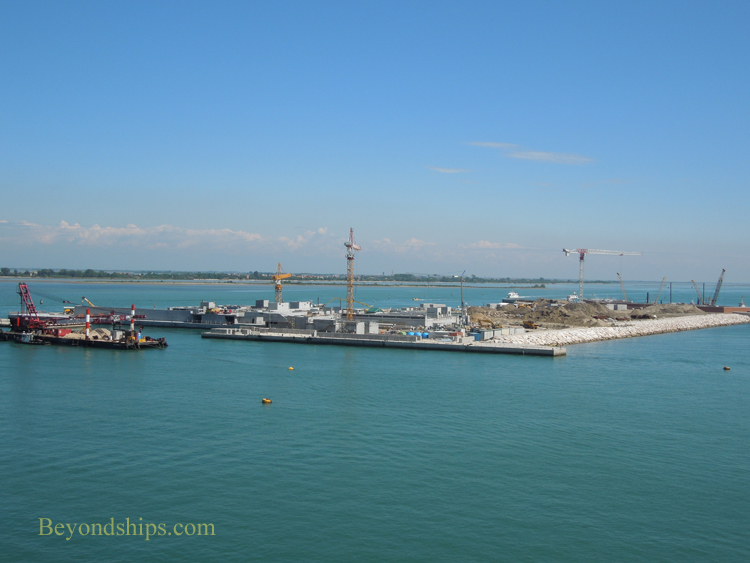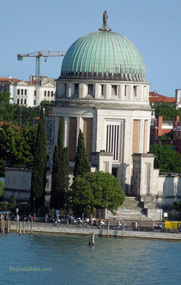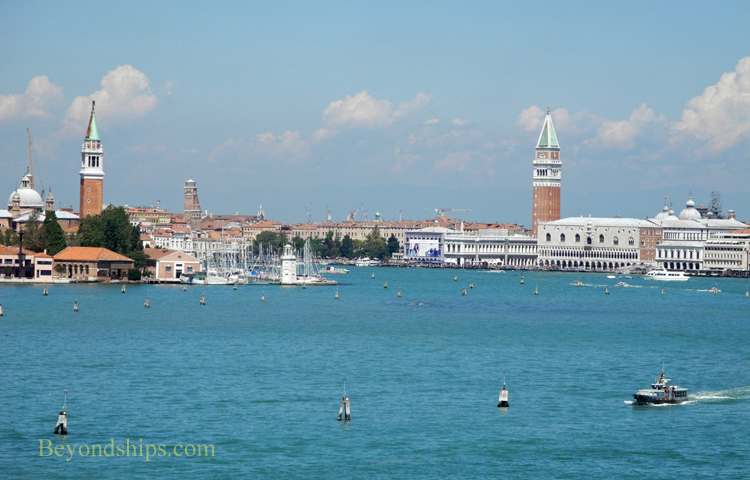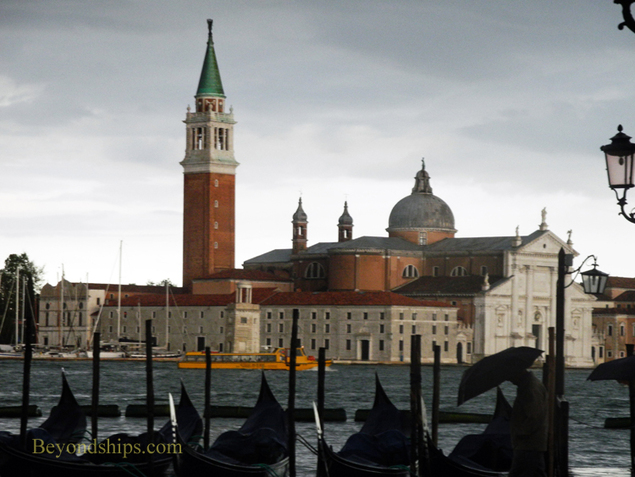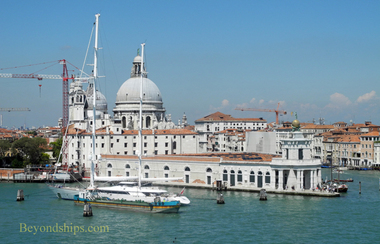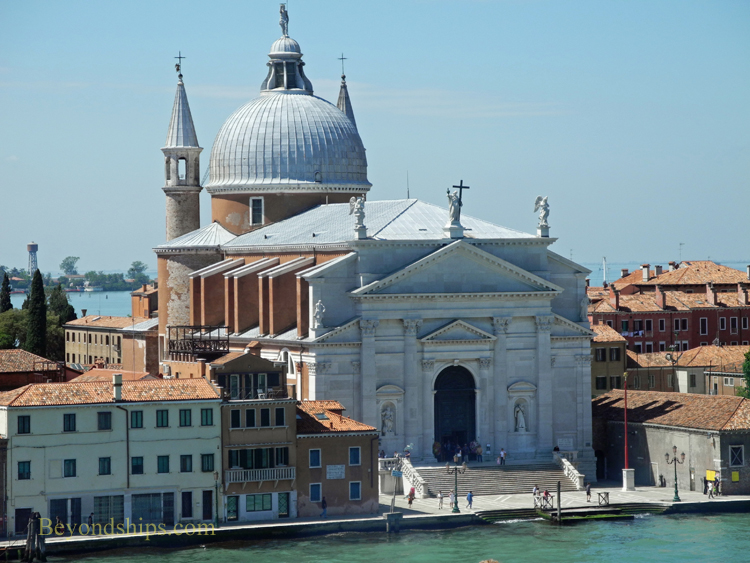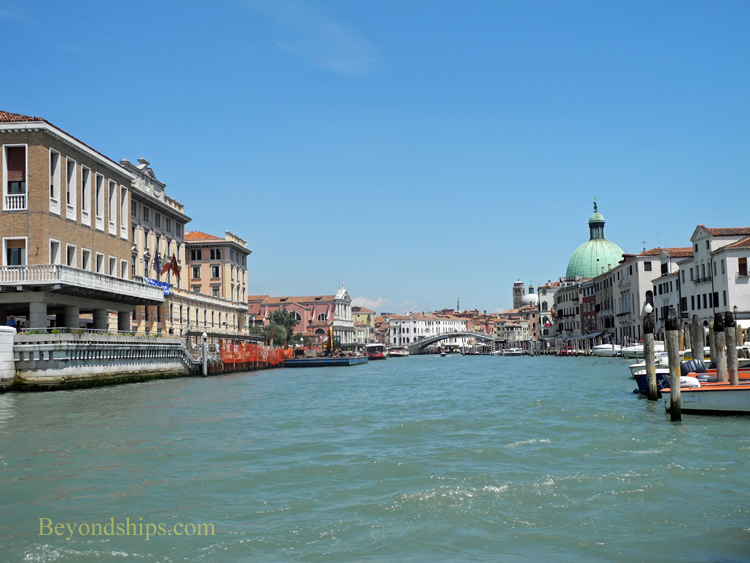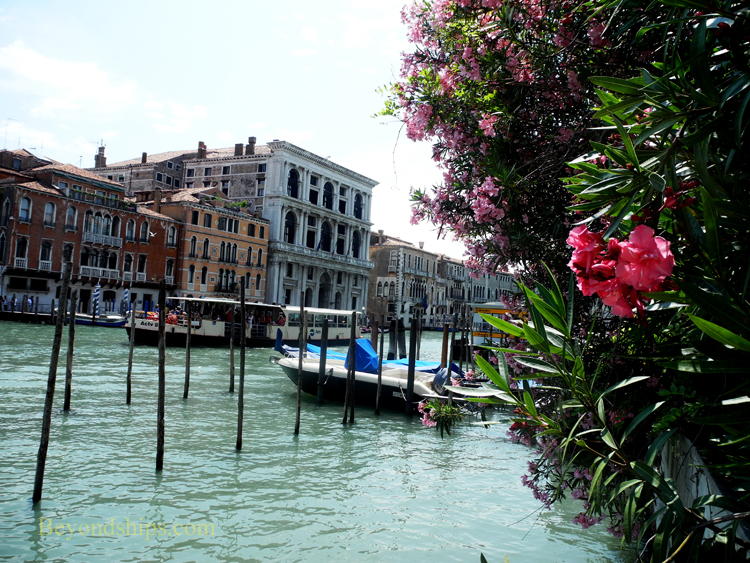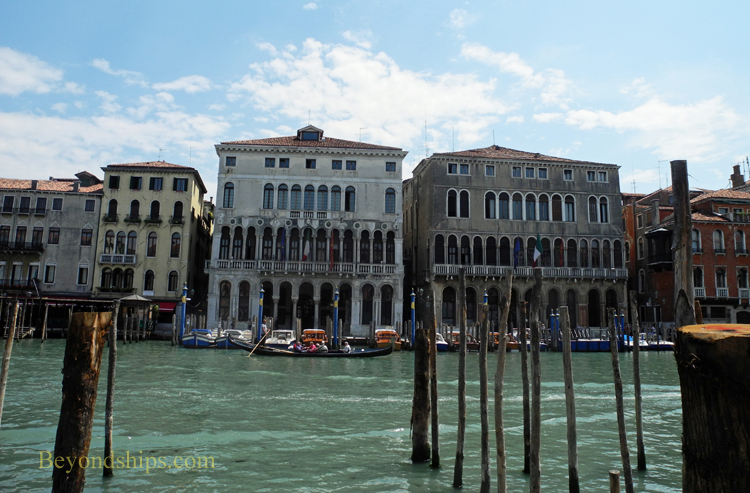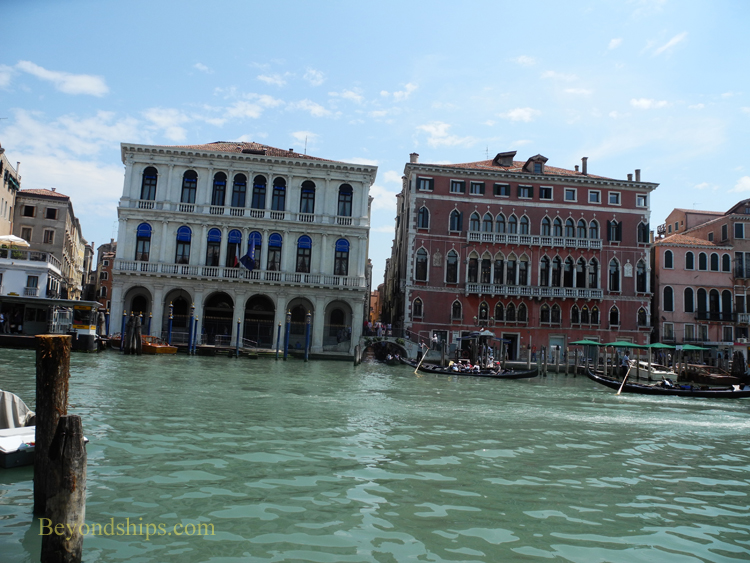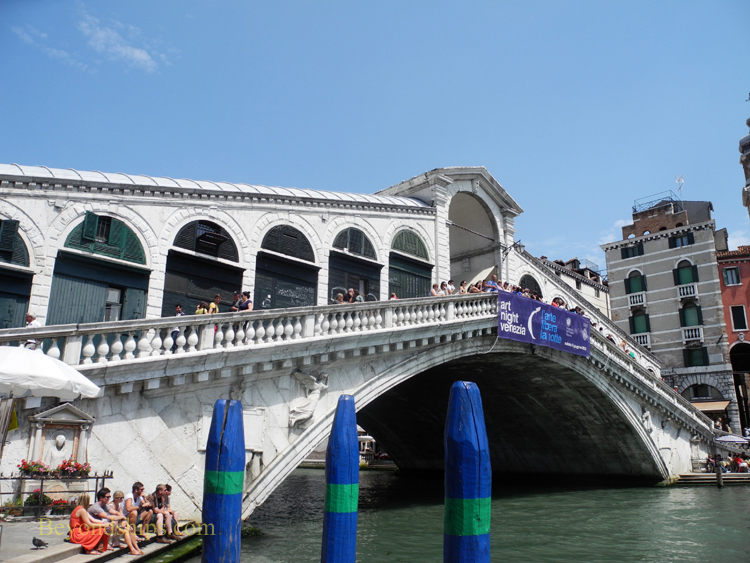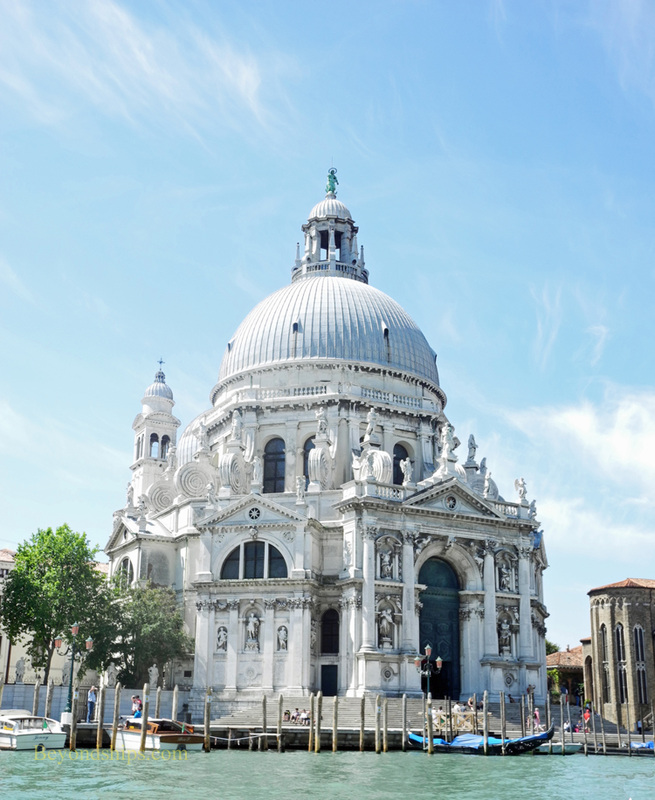|
Venice home page
|
|
CONTENTS
Overview and History Cruise terminal Links Going ashore experiences: Visiting St. Mark's and the Doge's Palace Walking Through Venice Slideshow The Gondola Experience |
OVERVIEWAuthor Thomas Mann wrote: “No one should approach, save by the high seas, . . . this most improbable of cities.” To do otherwise “is like entering a palace through the back door.”
Indeed, to sail into Venice on a ship is one of the great cruise experiences. You first pass by the Lido with its famous resort beach. But then, almost instantly, you see the skyline of the main part of the city with its soaring camponili and ancient buildings. The ship turns and you are in the heart of the city and can see the tiny canals leading off from the main shipping channel. Saint Mark's Square appears on the starboard side while Palladio's masterpiece San Giorgio Maiggore appears on port. Near the entrance to the Grand Canal, the ship turns slightly to port into the Giudecca Canal. But there are still more sights to come including another Palladio masterpiece the Church of Il Redentore. And always, there are romantic canals bordered by centuries old residences and gondolas passing by. The experience is only matched by that of sailing out of Venice. It is only appropriate that Venice should face the sea. Since the very founding of the city, Venice has depended on the sea for protection and for the trade that made her a world power. Keep in mind that while Venice is part of Italy today, for most of its history, it was independent of the rest of Italy. Venice is an improbable city. It is built upon some 117 low-lying islands in a lagoon. Thousands of wooden piles were driven into the mud. Now petrified, these piles form the base upon which all of the beautiful buildings are built. Unlike other cities, you do not find modern buildings next to ancient ones. Although there are examples of numerous architecture styles, you do not find any glass box skyscrapers or examples of the international movement. While some of it may look a little frayed around the edges, it is all deliciously picturesque. It is an artistic city. Titian, Tintoretto, and Veronese all worked here as did Canaletto whose 18th century paintings of Venice look remarkably like Venice today. Venice's museums and public buildings are treasure houses of great art. In music, there was Vivaldi and Monteverdi. Other composers and artists have visited Venice and drawn inspiration. Except for the Lido, there are no cars on the islands. People get around either by walking or by boat. It is surprisingly civilized. While it is tempting to think of Venice as a giant tourist attraction, some 60,000 people do live there. Many of them are involved in the tourist trade or work in the industries on the nearby mainland. Quite a few cruise ships are built in Venice. Venice also makes other unique things including the famous colored glass produced on the island of Murano as well as lace and silk items. The shops are also bursting with fabulously artistic masks, a heritage from the romantic masked balls of yesteryear. |
Venice is sinking and one of the first things you see approaching Venice is ongoing work on the lagoon barrier, which it is hoped will counteract the city's gradual decent into the sea.
Above: Approaching the heart of the city, St. Mark's Square is to starboard, the Grand Canal is straight ahead and the island of San Giorgio is to port.
Below: The monastery and Church of San Giogorio. Above: At the junction of the Grand Canal and the Giudecca Canal, the cruise ships pass the Old Customs House.
Below: Along the Guidecca Canal is the Church of Il Redentore. |
|
The Grand Canal is Venice's main street winding through the city's historic center (above and below).
Above and below: The aristocracy lived in splendid palaces along the Grand Canal.
"What news from the Rialto?" Salanio asked in Shakespeare's Merchant of Venice. The Rialto Bridge across the Grand Canal (above) was a new span in Shakespeare's day. It also contains shops and thus was a gathering place for the exchange of news and gossip.
The 17th century baroque masterpiece Santa Maria della Salute was dedicated to the Virgin in hopes of ending a plague that was ravaging the city. It is near the entrance to the Grand Canal within sight of St. Mark's Square.
|
Brief HistoryThis most civilized of cities owes its formation to barbarians. During the height of the Roman Empire, there were prosperous towns and cities on the Italian mainland near Venice but no one wanted to live on the unhealthy muddy islands where Venice stands now. As the Empire tottered, wave after wave of barbarians swept down and pillaged the nearby cities. This caused people to flee to the islands in the lagoon for refuge.
Gradually over time, the settlements in the lagoon united and a city-state was formed. The government that evolved was a complicated one. It was headed by a non-hereditary duke called the “doge.” However, there were also legislative bodies and a system of checks and balances designed to ensure that no one obtained too much power. Essentially, only aristocrats could vote. Nonetheless, the city-state was called the “Venetian Republic.” Venice soon grew to become a world power through trade. In 991, it entered into a trade treaty with the Saracens, which began a tradition of trading with the East. The travels of merchant explorer Marco Polo in the 13th century enlarged Venice's relationship with the east leading to trade with Central Asia and China. Also in the 13th Century, Venice was selected to be the embarkation port for the European armies leaving for the Fourth Crusade. As agreed, Venice built the warships and provided the sailors and marines that were to be used in transporting the armies to the Holy Land. However, when the Crusaders arrived in Venice, they were much fewer in number than had been envisioned and did not have the money to pay the Venetians. Severe strains had been placed on Venice's economy to build build the fleet so full payment was imperative. So in order to obtain the money, the Venetian fleet and the Crusaders took to intimidating and attacking various Christian cities along the Adriatic coast. This earned them an excommunication from the Pope but not the needed money. So when the son of the deposed emperor of the Byzantine Empire proposed to pay the Crusaders' debt and more if they regained the throne for him, the fleet and the Crusaders attacked Constantinople, which was the richest city in Christendom. They succeeded in putting both father and son on the Byzantine throne but the restored leaders found that their treasury did not have the money they had promised. So, after a number of other twists and turns, the Venetians and the Crusaders sacked Constantinople. For Venice, this was a turning point. Not only did it have the booty that it took home from Constantinople but it was now the major power in the Eastern Mediterranean. In the following centuries, Venice engaged in several wars with its chief commercial rival, Genoa, and conquered much of the Adriatic. Its goal throughout these adventures was to enhance trade and the city grew ever more wealthy. By 1423, Venice had a population of 200,000, a navy with 45 galleys and a commercial fleet of 300 large and 3,000 medium-sized ships. It was by far the richest city in Europe. But Venice's fortunes were starting to decline. Turkey had emerged as a power in the region and Venice struggled against Turkish invasions of Europe. In addition, with the discovery of the New World and of sea routes from Europe to Asia around the Cape of Good Hope, cities like Lisbon, London and Amsterdam became the centers of trade. Venice's importance as a trading center was reduced. The end of the Venetian Republic came in 1797 when it surrendered to the French under Napoleon Bonaparte. During the first half of the 19th century, Venice was largely under the control of Austria. However, in 1866, after the Seven Weeks War, Venice became part of the newly formed Kingdom of Italy. |
|
|
|
Cruise destination - - Venice, Italy - Overview (home page)
